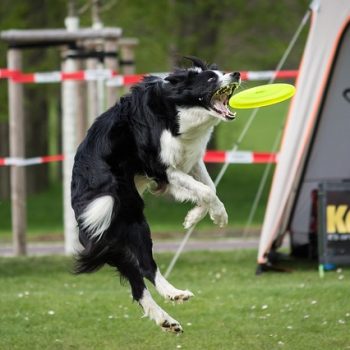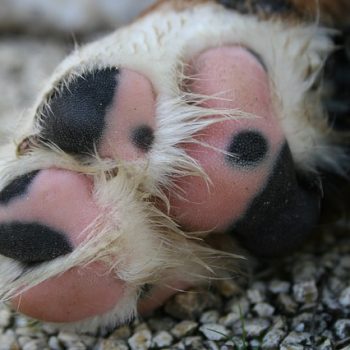A generic diet may be based on dietary principles that work, but just how well they work can be based on unique metabolism, so we need to consider that as well. There are different types of bladder stones and many are combination stones.
The three most common are urate (Dalmatians are genetically disposed to forming these stones), calcium oxalate, and struvite. Urate crystals and stones can be a heads up about liver shunts, especially in puppies, so the Dalamation is not the only breed that can have these, but for different reasons. Urate crystals can be prevented by feeding the right diet. The problem here is that some people don’t want to hear what the right diet is because it’s vegetarian. Eggs, milk products and tofu can make up the protein part and the rest is pasta, potatoes or rice and certain vegetables that are low in purines. That’s the start. In some cases, chicken can be fed, but if you start with chicken and the dog has urate crystals, the chicken has to go and then you can recheck urine, see where you stand and take it from there. Chicken might be ok later, but there’s a weaning process to go through. I’ve been working with Dalmations for about 18 years and never had an issue with crystal formation once the right diet was being fed. The thing to remember is that “right diet” means it has to be right for that particular dog. Urate stones look like this:
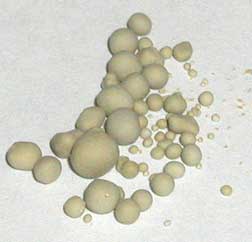
Struvite stones are almost always due to a urinary tract infection and urine pH will be high. Struvite stones are the easiest to deal with from a dietary perspective. In a nutshell, we increase protein from eggs and meats and lower the carbohydrate content of the diet. There’s more to it, but that’s the start. A basic struvite stone looks like this:
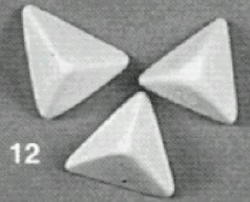
Calcium oxalate crystals can be more challenging, but again, success comes from understanding how a certain dog reacts to proportions of certain foods rather than just the foods themselves. Basic calcium oxalate stones look like this:
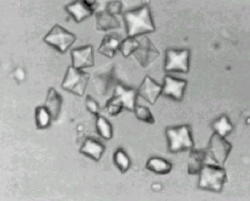
Protein derived from meat, dairy and fish will decrease urine pH and most of these dogs have low urinary pH to begin with. That’s a common problem, so we need to feed less of the foods above, but “less” is relative because it depends how much of them the diet provided in the first place. To compensate for the lost calories after a reduction of dietary protein, we use carbohydrates (choose white rice, egg noodles, wild rice or rye bread) and as luck would have it, carbs help to increase urine pH. Bonus! Now, we add low oxalate vegetables and fruits which means we’re restricted to acorn squash, white cabbage, cauliflower, cucumber, green peas, iceberg lettuce, red pepper, turnip roots, zucchini, peeled apples, cantaloupe, cherries, honeydew, mangoes, nectarines and watermelon. Cook the vegetables and don’t feed organ meats.
UPDATE (2021) A common frustration for pet parents is finding treats that work well for calcium oxalate stone formers. Although feeding the foods listed above is helpful, calcium plays a critical role in helping to flush oxalate out of the body. Treats that can help in this way as well as provide support through important antioxidants and phytonutrients are unavailable. These formulated recipes fill that void.
One of the most critical thing you can do to prevent crystals and stones is to keep the dog really well hydrated. Make the food “soupy” by adding water to the food bowl. Preferably not plain tap or mineral water (filtered or distilled are much better) since we want to avoid excessive mineral intake – but we want to a feed a balanced diet, so this does’t translate to not adding the amounts of required minerals to food. Flushing out those crystals with water prevents them from aggregating into a stone in the first place.
Photos and credit:http://www.lbah.com/word/bladder-stones/ with permission

